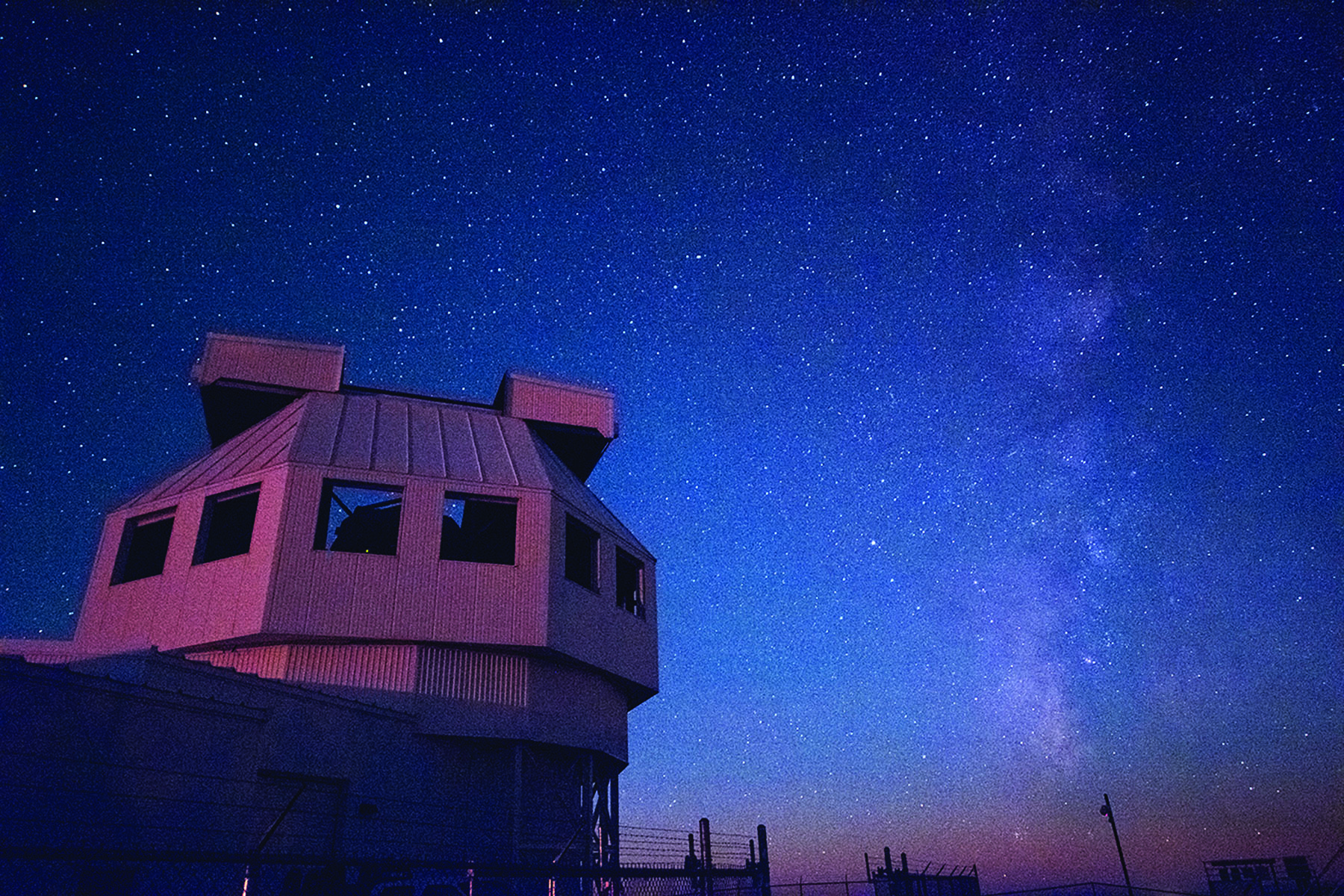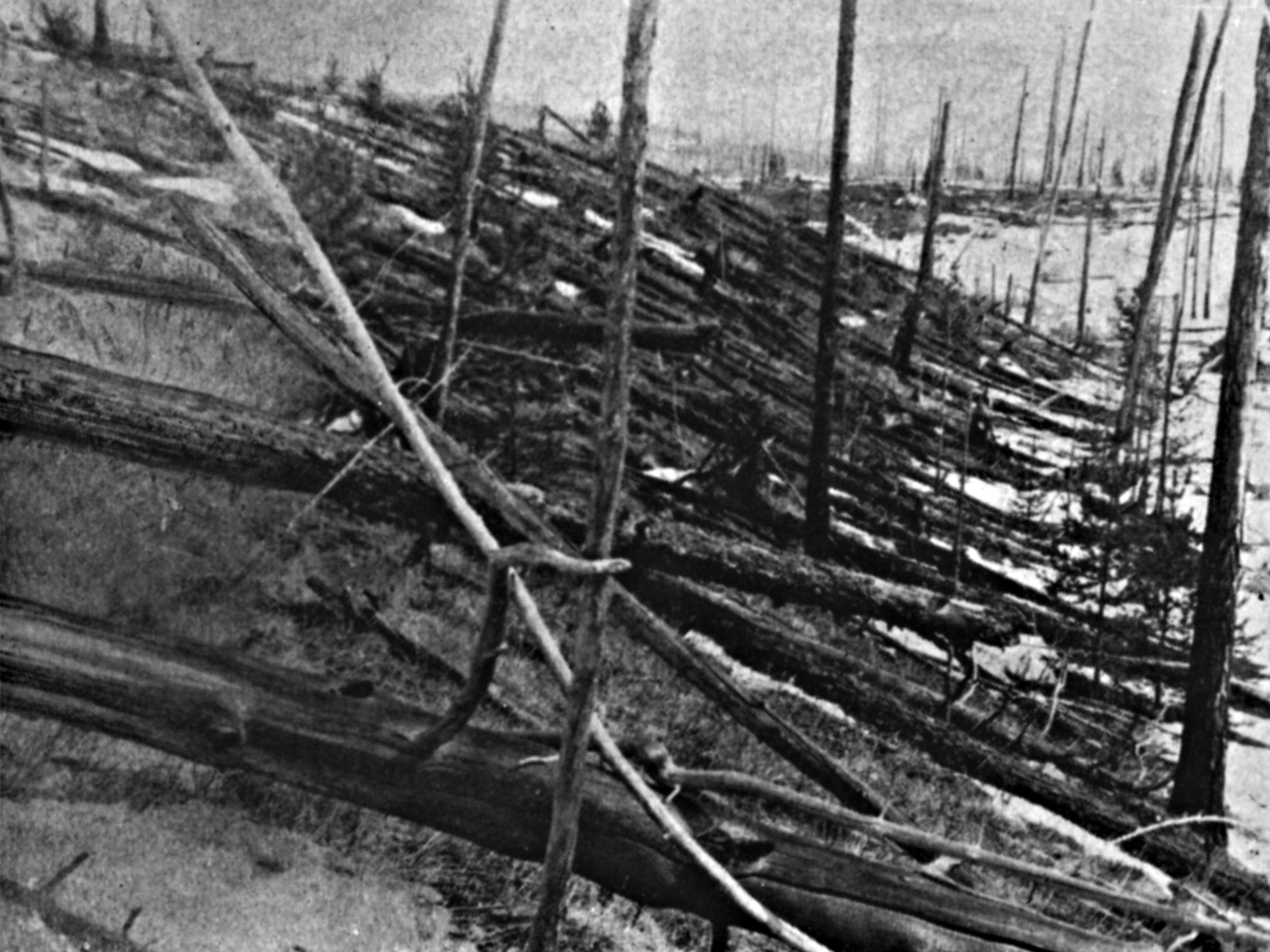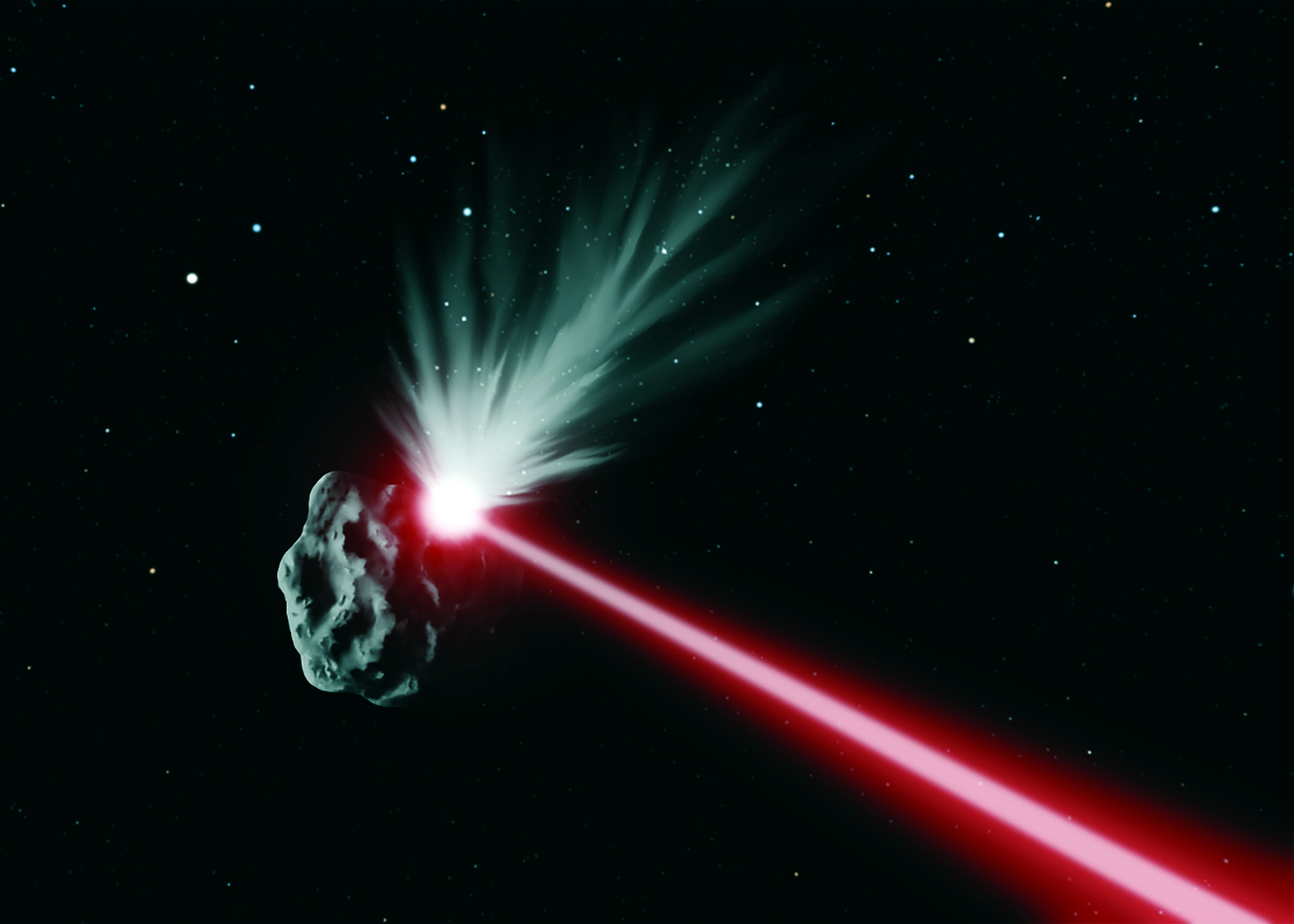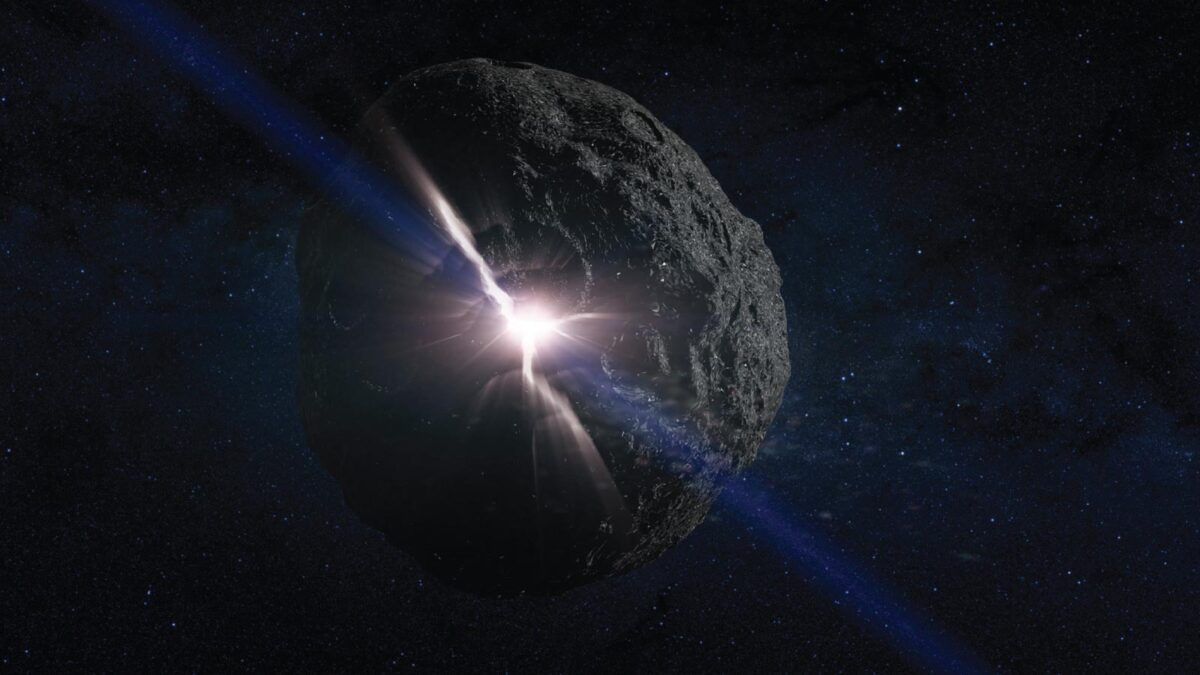Defending Earth
By Michael Peck|February 2017
Should the military have a greater role against wayward asteroids and comets?
This story was updated Feb. 21, 2016, to correct the location of the Space Surveillance Telescope in New Mexico.
In the year 2135, a 500-meter-wide asteroid named Bennu will approach the Earth so closely that it will pass inside the moon’s orbit.
That’s a close call in interplanetary terms, though for the inhabitants of Earth, a near-miss is good enough. Nonetheless, what worries astronomers is what comes next. Passing so close to Earth and its gravity will alter Bennu’s orbit, which means the next time it comes, it might not miss our planet.
Concerns over such a catastrophe have increased in recent years as the government and the scientific community contemplate the need for planetary defense against asteroids and comets known as near-Earth objects, or NEOs. A December 2016 “National Near-Earth Object Preparedness Strategy,” released under the auspices of the White House’s Office of Science and Technology Policy, listed seven steps for a U.S. planetary defense strategy, including developing better methods for detecting and deflecting NEOs.
The next step is an action plan that will specify how these goals will be implemented.
As it stands in 2017, the job of stopping Bennu — or any other asteroid headed to Earth — rests with civilian space agencies. Yet mostly absent from the planetary defense discussion is the U.S. military. The U.S. Air Force does operate the Space Surveillance Telescope in New Mexico, a DARPA-developed telescope that the U.S. plans to move to Australia to track orbital debris and space objects starting in 2020. Otherwise, Earth’s planetary defense efforts are strictly civilian, in the hands of organizations such as NASA, the European Space Agency and an assortment of scientists who work on protection in their spare time.
Yet planetary defense seems to have as much in common with military operations as it does with traditional space exploration. For starters, consider what planetary defense entails. Detection of a distant object, preferably with maximum early warning time. Identification of that object, and its trajectory and impact, followed by computation of how and where to intercept the asteroid to prevent it from striking Earth. Does this sound familiar? Instead of a space rock, it could have been a Soviet intercontinental ballistic missile streaking in over the North Pole during the Cold War, one of Saddam Hussein’s Scuds, or a North Korean ballistic missile today.
The most authoritative guide to planetary defense seems to be a 2010 National Academy of Sciences study, which recommended a suite of defensive measures to stop asteroids: gravity tractors, kinetic impactors and nuclear devices (and, if all else fails, civil defense to minimize damage when the big rock hits). The choice of method depends on the size of the asteroid, and how close it is to Earth when detected. “No single approach to mitigation is appropriate and adequate for completely preventing the effects of the full range of potential impactors,” the study concludes.
This sounds much like a terrestrial layered air and missile defense system, which uses successive barriers to stop an attacker. A prime example is a U.S. Navy aircraft carrier battlegroup. The carrier’s jet fighters intercept attackers hundreds of miles from the battlegroup. Surviving attackers must then penetrate medium-range shipboard surface-to-air missiles at a range of about a hundred miles, with the remaining intruders forced to pass through a final barrage of short-range anti-aircraft missiles and guns.
The analogy is somewhat crude to be sure. Asteroids don’t take evasive action or jam radar signals, and people on Earth are trying to deflect objects, not blow them out of the skies. Nonetheless, gravity tractors can be likened to the long-range layer of an air defense system. The idea is to orbit a small spacecraft around an object. The craft would activate its engines, and through its tiny but persistent gravitational pull, tug the asteroid off its collision course with Earth. NASA will test the concept with the Asteroid Redirect Mission, or ARM, initially scheduled for December 2020 but postponed until December 2021. The mission calls for the solar-electric powered ARM spacecraft to land on a large asteroid, use its robotic arm to pick up a large boulder, and tow it into orbit around the moon. ARM will test two capabilities, according to Lindley Johnson, NASA’s planetary defense officer. First, towing a boulder into lunar orbit will demonstrate the utility of using solar-electric craft to haul objects around the inner solar system and as preparation for a human Mars expedition.
Johnson doesn’t see this method as powerful enough to pluck asteroids from a collision course with Earth. “This capability might eventually be grown to handle natural objects as large as 10 meters in size for, say, asteroid mining operations, but this is still so small an object that Earth’s atmosphere would protect the surface from significant effects anyway.”
However, what ARM will also test is whether a large enough mass can alter the orbit of an asteroid so it doesn’t hit Earth. After the spacecraft picks up the boulder, the duo will maintain station with the asteroid for weeks or months before heading to the moon, enabling NASA to determine whether the asteroid suffered a very slight, but measureable, deflection.
Gravity tractors are the least violent of the planetary defense options, what Johnson describes as a “rather creative and benign” solution. So benign in fact that a gravity tractor requires the asteroid to be detected several decades before impact to give the spacecraft enough time to work, according to the National Academy of Sciences study. In addition, a gravity tractor can’t tug anything larger than a medium-sized asteroid.
But what about objects detected a decade or two out, in Earth’s medium-range defense zone? The weapons of choice are kinetic impactors. Like a pool cue striking a billiard ball, a spacecraft will strike an asteroid with such force as to deflect the asteroid from its impact trajectory. “You only have to impart a very small force, a small change in velocity, years in advance to make a direct impact a miss,” Johnson says.
The technique was indirectly tested against asteroids in 2005, when NASA’s Deep Impact mission slammed a 370-kilogram impactor into comet Tempel 1, creating a 150-meter-wide crater that allowed scientists to examine the internal composition of a comet. The real demonstration was supposed to come with the Asteroid Impact and Deflection Assessment, or AIDA, mission, a collaboration among NASA, the European Space Agency, the German Aerospace Center, Observatoire de la Côte d´Azur, and The Johns Hopkins University Applied Physics Laboratory. AIDA was a dual-spacecraft mission aimed at 65803 Didymos, a binary with an 800-meter asteroid orbited by a 150-meter companion. As NASA’s Double Asteroid Redirection Test, DART, craft slammed into the companion, the European Space Agency’s Asteroid Impact Mission craft would observe whether the rock changed its orbit around the primary. However, the European Space Agency opted last December not to fund its spacecraft, though U.S. scientists say they could continue the mission just with DART.
Kinetic impactors also happen to be the weapon the Pentagon will use to attempt to shoot down ballistic missiles. The ground-based Exoatmospheric Kill Vehicle and Standard-Missile 3 destroy missiles by slamming into them in space. For that matter, science-fiction writer Jerry Pournelle in the 1950s proposed “Rods from God,” orbital satellites launching kinetic projectiles that would destroy targets on the ground.
While Johnson agrees that “the principles are largely the same with kinetic technologies explored by the Missile Defense Agency,” he also sees major differences between ballistic missile defense and planetary defense. The intercept velocities for an asteroid are at least three times faster than a missile, and often much faster, while the space rocks also have far more mass. Anti-missile weapons also have too short a range to stop an asteroid in time, and “their effect would be somewhat analogous to a bug hitting the windshield of a semi-tractor trailer,” Johnson says. That said, he also believes that some missile defense technology, especially software, may be useful for planetary defense, including the upcoming DART test of a kinetic impactor on an asteroid.
Finally, we come to the ultimate nightmare scenario: An asteroid detected just a few years before impact, which leaves too little time for gravity tractors or kinetic impactors. While astronomers are confident they have discovered most of the devastating kilometer-sized NEOs, the recent White House report noted that only 28 percent of objects 140 meters or larger — that is, bigger than the 1908 Tunguska impact that devastated 2,000 square kilometers in Siberia — have been spotted.
Or, perhaps the object is simply too big to be deflected by a projectile or towed into a new orbit. Then comes the ultimate option, one that has not been unleashed in anger since 1945: a nuclear device. Detonated at a specified distance from an asteroid, it would emit a barrage of X-rays that would vaporize the asteroid’s surface. The resulting plume of material would be like a rocket engine, changing the asteroid’s trajectory.
“We call it the technique of last resort,” Johnson says, “if we don’t have a lot of warning or a lot of time, and we need to give something a pretty good shove.”
As far as the technique’s effectiveness, Paul Miller, a physicist who heads planetary defense research at Lawrence Livermore National Laboratory, says that nuclear devices have some advantages. They can be used against objects that have not been detected until relatively close to Earth. “If you get to within, say, three years of warning, and an asteroid that’s a couple hundred meters, then you’re starting to have some difficulty with kinetic impactors.”
They also offer more control when it comes to applying just enough force to deflect an asteroid, but not so much that the asteroid fragments into a cloud of mini-asteroids that pummel the Earth. “The nice thing about stand-off nuclear explosions as a technique is that their effect can be dialed down if you just move them farther away from the asteroid.”
However, one problem with anti-asteroid nuclear weapons is political fallout. Space law expert Joanne Gabrynowicz notes that nuclear asteroid-busters could run afoul of the 1963 Limited Test Ban Treaty, which prohibits nuclear testing and explosions in outer space, and the 1967 Outer Space Treaty, which bars nuclear weapons from being placed in Earth orbit, on the moon, or in outer space. Regardless of whether such a treaty would actually stop a nation from nuking an asteroid headed toward it, it makes testing more complicated.
And though Lawrence Livermore designs nuclear weapons, Miller emphasizes that no one there is pushing for the nuclear option. “We are not saying we need a test or want a test in space.”
There are still other ideas for planetary defense that seem to have more in common with military defense. One proposal calls for lasers that would heat the surface of asteroids to around 3,000 degrees Kelvin, creating a jet of vaporized rock that would push the asteroid off its course with a force that its creator claims is as powerful as a space shuttle engine. The concept sounds broadly similar to the missile defense lasers being developed by several nations, including the U.S. and Israel. DE-STAR, or Directed Energy System for Targeting of Asteroids and Exploration — the brainchild of University of California Santa Barbara physicist Phil Lubin — would come in two flavors: what Lubin calls a “stand-off” (a familiar military word) version consisting of a kilometers-wide Lego-like orbital array of 1-kilowatt laser amplifiers that could target an asteroid out to 1 astronomical unit. The “stand-on” version would orbit a laser-armed satellite around an asteroid, and melt a spot on its surface with a 50-kilowatt laser, the same type of laser that the U.S. Army uses as a truck-mounted tactical weapon against rockets and mortar shells. Lubin estimates that the stand-on DE-STAR satellite would need to fire its laser for three years to deflect a 100-meter asteroid. The most bizarre idea may be a variation on the biblical injunction to turn swords into plowshares. In this case, it’s a Russian missile maker that proposed earlier this year to turn ICBMs into asteroid-busters. In February 2016, Russia’s Tass news agency reported that the Makeyev Rocket Design Bureau, which made ICBMs for the Soviet Union and now makes them for Russia, has proposed using converted ICBMs to destroy asteroids between 20 and 50 meters in size. Makeyev argues that because ICBMs are designed for immediate launch, they are ideal for destroying asteroids that have not been detected until within a few hours of striking Earth. The company would like to test the concept on the asteroid Apophis as it nears Earth in 2036.
However, one expert at an American rocket manufacturer questioned the logic of the approach. ICBMs are battery-powered and designed for short flights, not deep-space missions, the expert says. “You would be much better off with a space launch vehicle with a deep space bus on it.” And because ICBMs are designed to carry nuclear warheads, which are relatively small objects, they can carry only a few tons of payload. Besides, if an asteroid is detected so close to Earth that a few days of fueling time makes a difference, it’s too late to deflect it.
Yet even if planetary defense does have military characteristics, does that mean the military should handle planetary defense? NASA and civilian experts do not seem pleased at the thought of military intervention, perhaps not surprising given a history of occasionally troubled relations between the military and the civilian space sectors.
“Our Department of Defense is focused on man-made threats to our national security, and frankly already has too much on their plate with the resources they have been given for the space arena,” says Johnson, a former Air Force officer who served two tours with Air Force Space Command before coming to NASA. “It is understandable why they are not enthusiastic about adding this exceptionally rare naturally occurring hazard to their missions, particularly if there is a better agency to handle it — that being NASA.”
Johnson and others point out that to the military deep space is geosynchronous orbit, or 35,000 kilometers from Earth. There is no reason for the Pentagon to have a capability to operate out by Mars.
“It’s not that the military doesn’t have capabilities,” says arms control expert Jeffrey Lewis, who has also written about planetary defense. “It’s that we already have a pretty healthy civilian capability.”
Lewis also notes that while the military delivers nuclear weapons, it’s actually the Department of Energy, a civilian agency, -that builds them. Thus a nuclear device -— and experts are at pains to call it a device and not a warhead -— could be launched by NASA without Department of Defense involvement. “Fundamentally, I think this is an astronomy problem,” adds Lewis. “I think the best thing to do is to fund telescopes to look for these objects.”
But something the Pentagon does have is a $583 billion annual budget, which dwarfs NASA’s $19.3 billion budget, not to mention the $50 million allocation for the space agency’s Planetary Defense Coordination Office. Strangely, while Johnson says planetary defense could use more resources to develop detection and mitigation technologies, he also adds that “this does not warrant even a $500 million per year effort.”
NASA’s Planetary Defense Coordination Office has only about eight people working part time. “At Lawrence Livermore, we are putting the equivalent of less than two full-time people on this project,” Miller says. “It’s a couple of full-time post-docs and a number of other staff — 10 or 12 people -— who contribute their expertise to really pull the whole project together.”
Johnson says his office supports the efforts of about 200 people in the United States at NASA centers and other scientific sites, plus some assorted astronomers. But planetary defense right now is an overwhelmingly part-time effort. This baffles Lubin, who believes the human race is “rolling dice” with the fate of Planet Earth.
“The people working on this are trying to save the planet in their spare time,” says Lubin.
He sees the problem as a lack of leadership. “It’s nobody’s problem. It’s not NASA’s problem. It’s not the military’s problem.”
“Waiting for a threat to occur, and planning for it then, is like waiting for an adversary to launch a missile at you, and then say, ‘It’s time to develop a missile defense system.’”★
“Our Department of Defense is focused on man-made threats to our national security, and frankly already has too much on their plate with the resources they have been given for the space arena.”
Lindley Johnson, NASA’s planetary defense officer
Space is a target-rich environment. Paul Chodas, who manages NASA’s Center for Near Earth Object Studies, puts the latest estimate for near-Earth objects at four asteroids greater than 10 kilometers in diameter, and 940 greater than 1 kilometer. That covers the really big ones, but scientists also estimate there are about 25,000 asteroids greater than 140 meters, and 250,000 can be dismissed as small fry. The Tunguska asteroid strike, an airburst that devastated 2,000 square kilometers of Siberian forest in 1908, is estimated to have been about 40 meters in diameter. In addition, 1,705 NEOs have been classified as potentially hazardous asteroids, meaning they are greater than 140 meters and will come within 0.05 astronomical unit, or about 7.5 million kilometers, of Earth, a hair’s breadth in cosmic terms.











